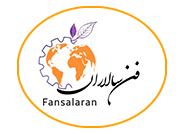– The acne vulgaris market size reached a value of USD 7.2 billion in 2024. Looking forward, IMARC Group expects the 7MM to reach USD 10.4 billion by 2035, exhibiting a growth rate (CAGR) of 3.33% during 2025-2035.
Acne vulgaris is a common chronic inflammatory skin disease, affecting a large percentage of the world’s population at some stage in their lives, mostly adolescents and young adults. It is estimated to occur in 9.4% of the world’s population, with prevalence up to 80-90% in teenagers and 40-50% in adults in their twenties and thirties. Aside from its physical forms, acne also causes permanent scarring and significant psychological distress, such as depression and anxiety, which highly encourage individuals to acquire effective treatments. Acne’s strong psychological consequence, going beyond physical discomfort, is a strong driver for market expansion.
It implies that demand is greatly driven by quality of life and self-esteem, not just by medical issues. Those firms which successfully make inroads on this emotional aspect of their product planning and promotion, with a goal of “completely clear skin” or riding awareness campaigns, are ready to gain considerable market share. This also reflects a transition in consumer demands from the management of symptoms to esthetic excellence and better mental health. In addition, the growing incidence of acne in adults, in conjunction with widespread increases in aesthetic concerns, broadens the target audience for the market beyond the teenage years. This creates an escalating demand for products that will address dual action, i.e., acne treatment and anti-aging, or be specific to the needs of older skin, which suggests a need for ongoing treatment solutions over a longer life course. Key Trends Shaping the Market in 2025 2025 will witness ongoing innovation in therapies targeting the root causes of acne specifically.
One strong trend is the emergence of next-generation laser therapies, especially the 1726-nm sebum-targeting lasers such as AviClear and Accure, which provide targeted intervention for inflammatory acne with good results and low side effects.
These technologies are a strategic shift towards non-invasive and minimally invasive treatments that minimize scarring and downtime, pleasing patients who want effective but convenient treatments. Aside from lasers, the market is seeing the creation of innovative pharmacologic therapies, such as new topical and oral compounds that work against resistant bacterial strains, and biologic drugs for more serious, chronic inflammatory conditions.
The release of certain drugs such as clascoterone cream, which gained regulatory clearances during early 2025, is an example of emphasis on targeted action, anti-inflammatory action, and lower risk of antibiotic resistance. There is also more research into add-on treatments such as probiotics and immunomodulators that seek to re-establish microbial balance of the skin.






